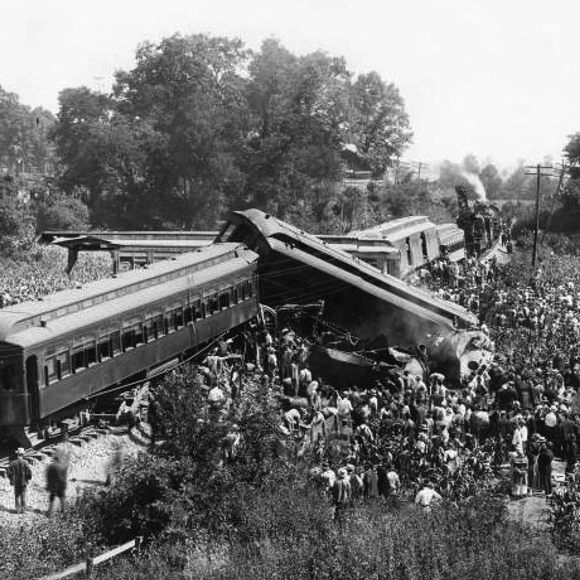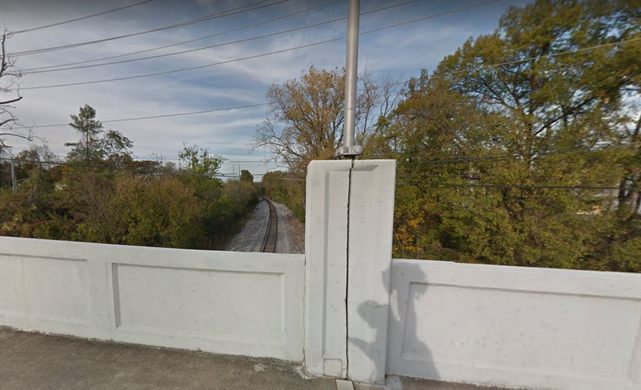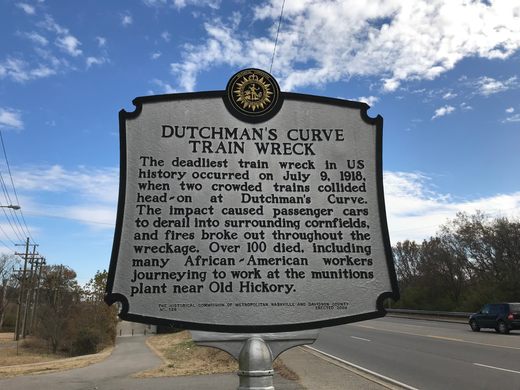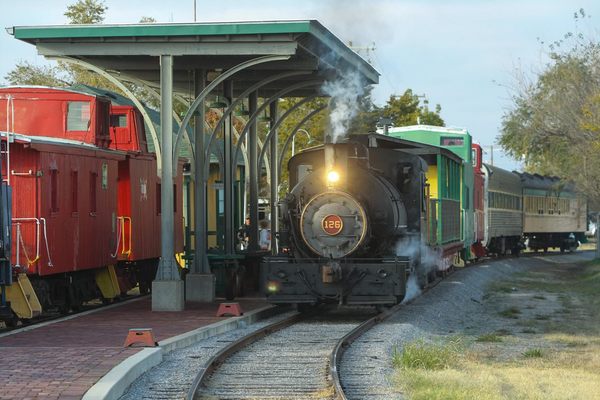Dutchman's Curve
The site of the one of the most deadly train wrecks in American history.
On the morning of July 9, 1918, at this otherwise unremarkable spot along the railroad on the western outskirts of Nashville, two trains traveling in opposite directions on a single-track section of the railway collided head on, causing both cars to derail and kill 101 passengers.
The wreck on the Nashville, Chattanooga, and St. Louis Railway is considered the most deadly rail disaster in American history. Today a plaque on the site memorializes the dead, many of whom were African-American laborers traveling to Nashville to work in a gunpowder plant.
On the morning of the accident, the No. 4 left Nashville bound for Memphis ,while the No. 1, a half hour behind schedule, was heading from Memphis to Nashville. Due to a miscommunication between a conductor and tower operators, both trains entered a single-track section of the railway called Dutchman’s Curve at the same time, heading toward each other.
At 7:20 a.m., the trains collided at a speed of around 60 mph, hurling their cars off the rails. Because the passenger cars were wooden, they were destroyed, killing 101 people and injuring 171. The tragedy prompted railroad companies across America to eventually stop using wooden passenger cars for good.
Know Before You Go
The spot on the railroad where the wreck occurred, as well as a commemorative plaque, are located along the Richland Creek Greenway, a trail which is accessible from nearby White Bridge Pike.


















Follow us on Twitter to get the latest on the world's hidden wonders.
Like us on Facebook to get the latest on the world's hidden wonders.
Follow us on Twitter Like us on Facebook